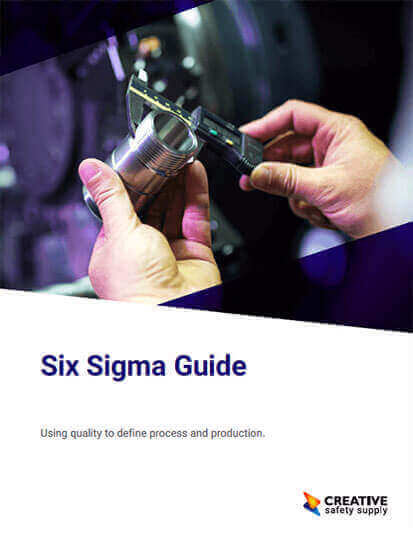What is Six Sigma?
Six Sigma is a technique used to improve the overall quality of production output. Originally developed by Motorola, the six sigma process is used to remove causes of variation and defects in manufactured products and is universally recognized as an important Lean Manufacturing concept.
 Six Sigma, as a whole, relies on several other quality management processes to function, including statistical methods such as data collection, charts and tables. When companies implement six sigma, projects generally involve a defined sequence of steps and quantified targets. The targets could be product quality, production process, financial conditions, or several other set goals. Generally speaking, if an organization can measure the "defects" in a process, then it can systematically identify ways to reduce or eliminate those defects. The goal is to be as close to "zero defects" as possible.
Six Sigma, as a whole, relies on several other quality management processes to function, including statistical methods such as data collection, charts and tables. When companies implement six sigma, projects generally involve a defined sequence of steps and quantified targets. The targets could be product quality, production process, financial conditions, or several other set goals. Generally speaking, if an organization can measure the "defects" in a process, then it can systematically identify ways to reduce or eliminate those defects. The goal is to be as close to "zero defects" as possible.
In the quality management world, "Six Sigma Quality" is defined as a process that produces no more than 3.4 defects per million opportunities. An "opportunity" may be defined as the chances of the products or processes not conforming to, or meeting, the required specifications. This means that six sigma quality management demands that a process be as close to perfect as possible.
Methodologies
Six Sigma projects can follow two different, five-phased methodologies: DMAIC and DMADV. DMAIC is used mainly for projects aimed at improving existing manufacturing processes and DMADV is used primarily for projects aimed at creating new product or process designs.
DMAIC
- Define – define the problem (from both customers and process perspective)
- Measure – measure the current process and collect relevant data
- Analyze – analyze the data collected to determine the relationship to the problem and how to solve it
- Improve – improve the entire process based on the analysis of the collected data
- Control – control the future of the process to prevent any deviation from target
DMADV
- Define – define the design goal to meet the customers’ needs and manufacturing process
- Measure – identify risks, production process capability and product capabilities
- Analyze – after designs are created, each of them is to be analyzed to determine which is best for implementation
- Design – optimize the chosen design while planning for the next phase (this step may require simulations using software or prototype)
- Verify – verify the design: set up pilot runs, implement the production process, and hand it over to the process owners
The Six Sigma process is important in lean manufacturing and quality management. Check out some of our lean manufacturing tools and 5S items.




